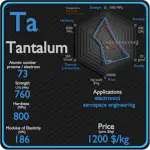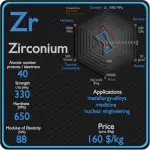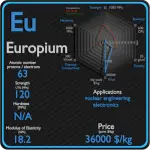This article contains comparison of key thermal and atomic properties of hafnium and tantalum, two comparable chemical elements from the periodic table. It also contains basic descriptions and applications of both elements. Hafnium vs Tantalum.

Hafnium and Tantalum – About Elements
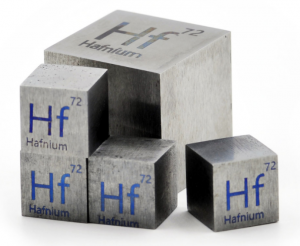
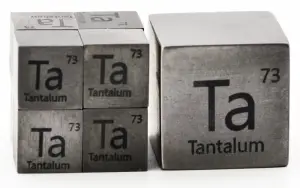
Source: www.luciteria.com
Hafnium and Tantalum – Applications
Hafnium
Hafnium has good neutron-absorbing properties, and hence it is used in control rods in nuclear reactors, but at the same time requires that it be removed from the neutron-transparent corrosion-resistant zirconium alloys used in nuclear reactors. While hafnium nitride is the most refractory of all the metal nitrides, hafnium carbide is the most refractory of all the binary materials. With a melting point of about 3900 °C it is one of the most refractory binary compounds known. Hafnium has been successfully alloyed with several metals including iron, titanium and niobium.
Tantalum
Tantalum consumption is dominated by capacitors for electronic equipment. Capacitors are electrical components that store energy electrostatically in an electric field, and are used in a wide variety of electric and electronic products. Major end uses for tantalum capacitors include portable telephones, pagers, personal computers, and automotive electronics. Alloyed with other metals, tantalum is also used in making carbide tools for metalworking equipment and in the production of superalloys for jet engine components. Compounds of tantalum such as tantalum pentoxide is used to make capacitors and glass with a high index of refraction for use in camera lenses.
Hafnium and Tantalum – Comparison in Table
| Element | Hafnium | Tantalum |
| Density | 13.31 g/cm3 | 16.65 g/cm3 |
| Ultimate Tensile Strength | 480 MPa | 760 MPa |
| Yield Strength | 125 MPa | 705 MPa |
| Young’s Modulus of Elasticity | 78 GPa | 186 GPa |
| Mohs Scale | 5.5 | 6.5 |
| Brinell Hardness | 1700 MPa | 800 MPa |
| Vickers Hardness | 1700 MPa | 870 MPa |
| Melting Point | 2227 °C | 2996 °C |
| Boiling Point | 4600 °C | 5425 °C |
| Thermal Conductivity | 23 W/mK | 57 W/mK |
| Thermal Expansion Coefficient | 5.9 µm/mK | 6.3 µm/mK |
| Specific Heat | 0.14 J/g K | 0.14 J/g K |
| Heat of Fusion | 24.06 kJ/mol | 31.6 kJ/mol |
| Heat of Vaporization | 575 kJ/mol | 743 kJ/mol |
